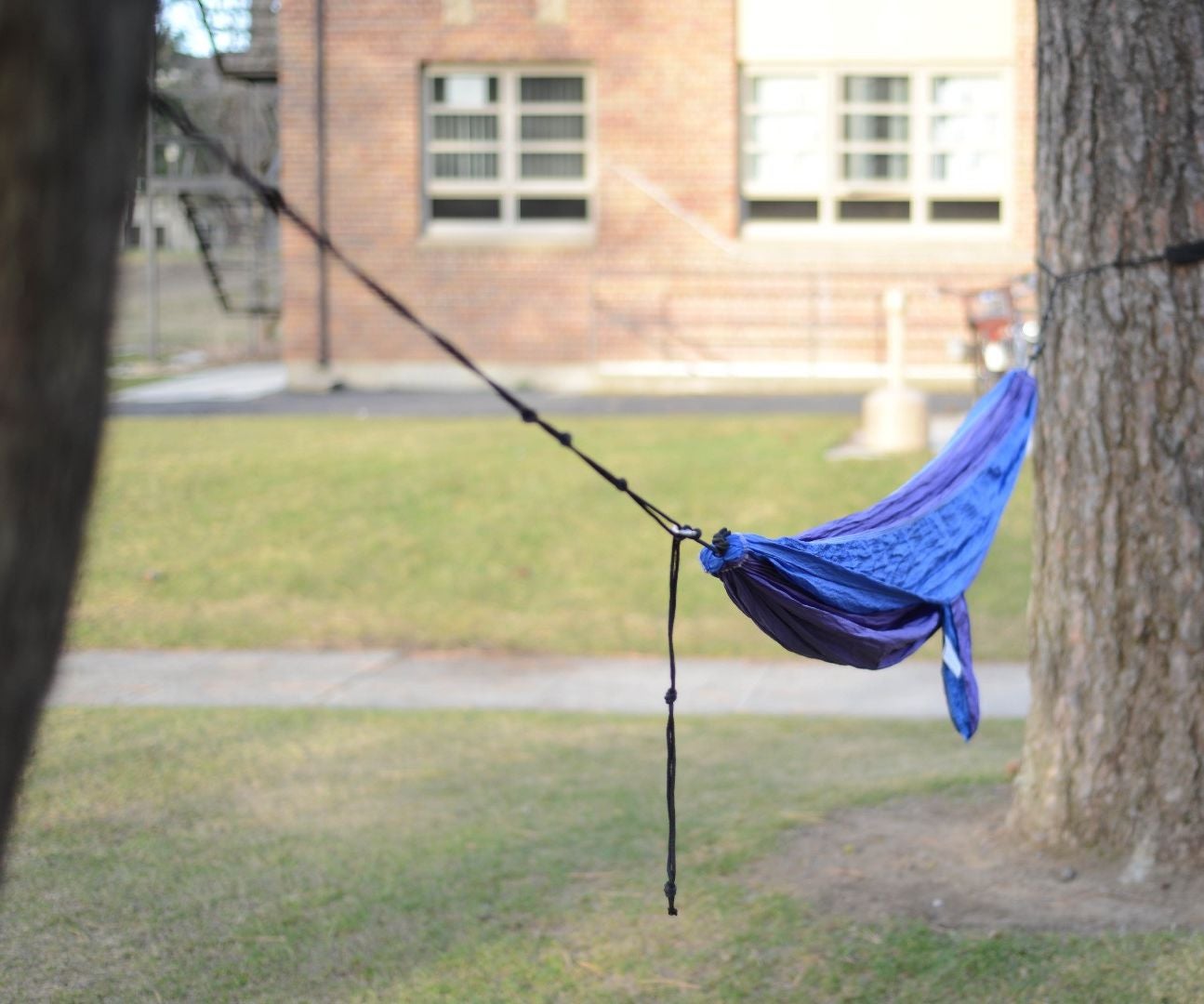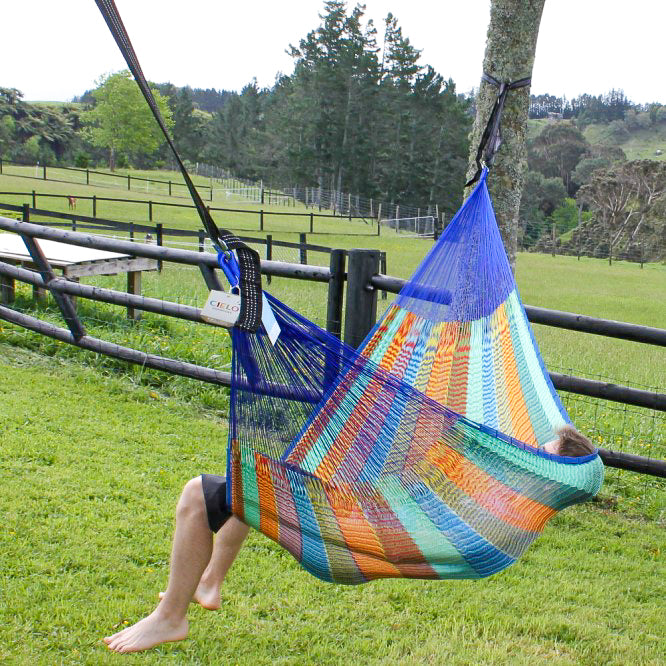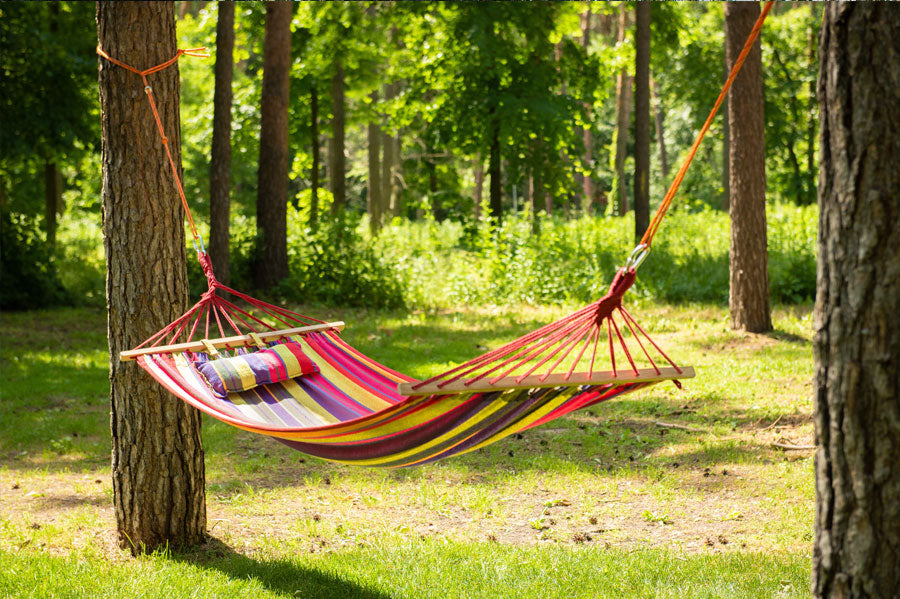Few things embody relaxation and leisure quite like a hammocks gently swaying in the breeze. Whether you’re lounging in your backyard, camping in the wilderness, or soaking up the sun on a tropical beach, hanging a hammock provides the perfect opportunity to unwind and connect with nature. In this comprehensive guide, we’ll take you through the step-by-step process of hanging a hammock, ensuring a secure and serene experience every time.
Selecting the Perfect Spot: Setting the Scene
Before you can begin hanging your hammock, it’s essential to choose the perfect spot. Ideally, you’ll want a location with sturdy anchor points, such as trees, posts, or a hammock stand. Consider factors such as shade, sunlight, and scenery when selecting your spot, as these elements can greatly enhance your hammock experience. Additionally, ensure that there is enough clearance around the hammock for it to swing freely without obstruction.

Gathering the Necessary Equipment: Tools of the Trade
To hang your hammock properly, you’ll need a few essential pieces of equipment:
- Hammock: Choose a hammock that suits your needs and preferences, whether it’s a traditional rope hammock, a lightweight camping hammock, or a luxurious fabric hammock with a spreader bar.
- Suspension System: This includes straps, ropes, or chains that will attach your hammock to the anchor points. Adjustable straps are recommended for ease of setup and versatility.
- Carabiners or S-hooks: These are used to attach the hammock to the suspension system securely.
- Measuring Tape: To ensure proper distance and height when hanging your hammock.
- Protective Tree Straps (if hanging from trees): These straps distribute weight evenly and protect tree bark from damage.
With these tools at your disposal, you’ll be well-equipped to hang your hammock safely and securely.
Determining the Proper Height and Distance: Getting it Just Right
Proper height and distance are crucial factors in ensuring a comfortable and safe hammock experience. As a general rule of thumb, the ideal height for hanging a hammock is approximately 18 inches off the ground when fully stretched out. This allows for easy entry and exit while minimizing the risk of falls.
When determining the distance between anchor points, consider the length of your hammock and the desired amount of sag or “banana” shape. Most hammocks require a distance of 10 to 15 feet between anchor points, but this may vary depending on the size and style of your hammock. Use a measuring tape to ensure accuracy and adjust as needed to achieve the perfect hang.

Attaching the Suspension System: Securing the Setup
Once you’ve determined the proper height and distance, it’s time to attach the suspension system to the anchor points. If you’re hanging your hammock between trees, wrap the tree straps around the trunks and secure them using the provided buckles or loops. Be sure to position the straps high enough to prevent contact with the ground when weight is applied.
Next, attach the carabiners or S-hooks to the end loops of your hammock, ensuring a snug and secure fit. If using ropes or chains, tie them securely to the hammock’s end loops using a reliable knot such as a bowline or figure-eight knot. Finally, connect the hammock to the suspension system, double-checking that everything is properly aligned and tightened before putting weight on the hammock.

Testing for Stability: Ensuring a Safe Setup
Before fully committing to your hammock hang, it’s essential to test for stability and safety. Carefully lower yourself into the hammock, distributing your weight evenly, and gently rock back and forth to gauge the stability of the setup. Check for any signs of sagging, slipping, or uneven tension in the suspension system.
If everything feels secure and stable, congratulations – you’re ready to swing into serenity! However, if you notice any issues or concerns, take the time to readjust and troubleshoot the setup before relaxing in your hammock. Safety should always be the top priority when hanging a hammock, so don’t hesitate to make adjustments as needed to ensure a safe and enjoyable experience.
Adding Personal Touches: Creating Your Oasis
With your hammock securely hung, it’s time to add the finishing touches to create your oasis of relaxation. Consider accessorizing with pillows, blankets, or a canopy for added comfort and style. Hang string lights or lanterns nearby to create a cozy ambiance and extend your hammock hang into the evening hours. And don’t forget to bring along a good book, a refreshing beverage, or your favorite tunes to complete the experience.
By following this step-by-step guide, you can hang your hammock with confidence and enjoy countless hours of rest and relaxation in your own personal paradise. So grab your hammock, find the perfect spot, and swing into serenity – the journey awaits!

Maintaining Your Hammock: Care and Storage Tips
Once your hammock is hung and you’ve enjoyed hours of blissful relaxation, it’s essential to properly care for and maintain your investment to ensure its longevity. Here are some tips for keeping your hammock in top condition:
- Clean Regularly: Depending on the material of your hammock, clean it regularly to remove dirt, dust, and debris. For fabric hammocks, machine wash with mild detergent and air dry. For rope hammocks, hose them down with water and let them dry thoroughly before storage.
- Avoid Sun Damage: Prolonged exposure to sunlight can cause fabric hammocks to fade and weaken over time. Whenever possible, store your hammock in a shaded area or use a hammock cover to protect it from UV rays.
- Inspect for Wear and Tear: Periodically inspect your hammock for signs of wear and tear, including fraying ropes, broken stitches, or weakened fabric. Repair any damage promptly to prevent further deterioration and ensure your safety while lounging.
- Proper Storage: When not in use, store your hammock in a dry, cool place to prevent mold and mildew growth. Avoid storing it in direct contact with the ground, as moisture can accumulate and cause damage. Consider investing in a hammock storage bag or hanging it from hooks to keep it off the ground and out of harm’s way.
- Protect Against Pests: Insects and rodents are attracted to the natural fibers of hammocks, so take precautions to protect against infestations. Store your hammock in a sealed container or use pest deterrents such as cedar blocks or lavender sachets to ward off unwanted visitors.

By following these care and storage tips, you can prolong the life of your hammock and continue to enjoy its comfort and relaxation for years to come.
